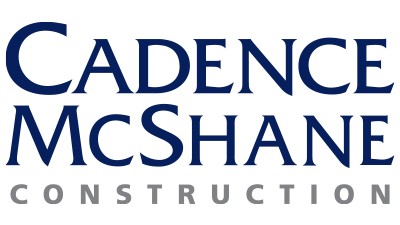Q&A: The Past, Present And Future Of The Austin-San Antonio Corridor
The I-35 Corridor between Austin and San Antonio is rapidly expanding into a hub of education, tech and commerce. Bisnow caught up with Cadence McShane Executive Vice President Srinath Pai Kasturi, whose projects underway play an integral role in the development of the Corridor, about the future of Austin, San Antonio and the interstate bridging them closer than ever before.

As Cadence McShane continues to build out the Corridor, the construction firm is dedicated to providing relentless service on all of its projects, from the recently completed high-tech Riata Vista Corporate Campus in Austin to Voss Farms and Veremendi Elementary Schools in New Braunfels. The company is also currently building 120 Ninth Street Apartments and Acequia Lofts in Downtown San Antonio.
Bisnow: So where is the Corridor heading over the next five years? 10 years?
Kasturi: I think it’s going to be phenomenal. Actually, at a Bisnow event we recently attended, we were shown a Google Maps snapshot from 10 years ago; San Antonio and Austin were both lit up at night. The corridor had a few lights here and there. Then they fast-forwarded to the present day...and the Corridor is blinking, just lit up. These little micro-level strategies being employed within that corridor will be instrumental to exploding the corridor’s growth in the upcoming years.
Bisnow: What market sectors do you see contributing to the growing economy of the Corridor?
Kasturi: I see a large push to meet industrial demand in the Corridor. Employers like Caterpillar, Amazon and Advanced Auto Parts are choosing the region and promoting growth in the area.
Bisnow: Do you think the current growth of the Corridor is sustainable?
Kasturi: The influx of people into Texas and especially Austin and San Antonio is overwhelming. We are excited about this and the opportunities that come with it, but we are cautiously optimistic about the sustainability of the growth.
Bisnow: What do you think attracts people to the Corridor?
Kasturi: The Central Texas region has always been a major technology hub. Not only do we have major higher education institutions like the University of Texas at Austin and the University of Texas at San Antonio, but we also have Fortune 500 companies who have based their headquarters here. There is such a tremendous talent base that is attracted to the region's signature, laid-back lifestyle and high quality of living.
Bisnow: What role has Cadence McShane been playing in the growth of the Corridor?
Kasturi: The Corridor today is becoming very similar to the one between Dallas and Fort Worth. Years ago, these were two separate, large cities with large expanses of land and a few developments in between. But now, it's shaping up to be more contiguous. We want to be a big part of connecting the dots between San Antonio and Austin, and the future is promising.
Bisnow: What role has the Corridor played in the firm's growth?
Kasturi: The Corridor is instrumental to our success and future. We are currently working on five different projects in the K-12, industrial and multifamily sectors in the Corridor area. It is instrumental in our current growth. Furthermore, with the sheer diversity of talent flowing into the area—approximately 45k undergraduate students at UT Austin alone combined with several more at UTSA and Texas State San Marcos—there's lots of opportunity in business and tech up and down the Corridor that will shape our future, and we're getting the chance to be a part of the Corridor's future.
To learn more about Bisnow partner Cadence McShane, click here.

